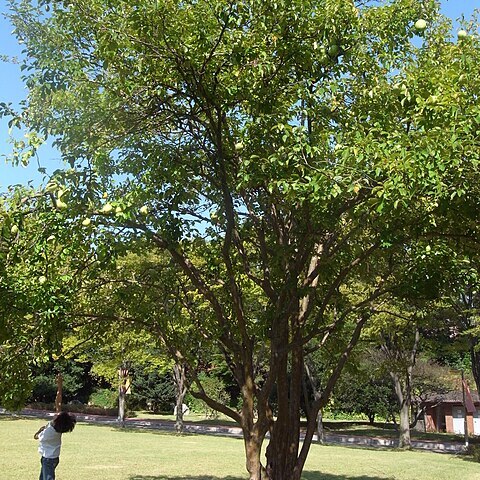Shrubs or small trees, to 5–10 m. Branchlets purplish red, terete, unarmed, initially pubescent, soon glabrate, with pale lenticels; buds purplish brown, glabrous, apex obtuse. Stipules ovate-oblong, rhomboidal, or lanceolate, 5–12 mm, herbaceous, subglabrous, margin glandular serrate, apex acute; petiole 5–10 mm, pubescent, glandular serrate; leaf blade elliptic-ovate or elliptic-oblong, rarely obovate, 5–8 × 3.5–5.5 cm, abaxially yellowish white tomentose when young, soon glabrescent, base broadly cuneate or rounded, margin aristate and sharply serrate (teeth glandular at apices), apex acute. Pedicel short, 5–10 mm, glabrous. Flowers solitary, 2.5–3 cm in diam. Hypanthium campanulate, abaxially glabrous. Sepals reflexed; triangular-lanceolate, 6–10 mm, abaxially glabrous, adaxially brown tomentose, apex acute or acuminate. Petals pinkish, obovate, base shortly clawed, apex rounded. Stamens numerous, ca. 1/2 as long as petals. Styles 3–5, ca. as long as stamens, connate at base. Pome fragrant, dark yellow, narrowly ellipsoid, 10–15 cm, woody; sepals caducous; fruiting pedicel short. Fl. Apr, fr. Sep–Oct.
More
A shrub. It loses its leaves during the year. It grows 5-10 m high. The branches do not have spines. They are hairy. They are purple-brown. The leaves are narrowly oval and 5-8 cm long by 4-6 cm wide. They taper to both ends and also have sharp teeth. They turn red in autumn. The flowers are pink. They occur singly and are about 3 cm across. The fruit are oblong and 5-6 cm long by 4-5 cm wide. They are dark-yellow and woody.
Can be grown by cuttings or seedlings. Seeds needs stratification.

